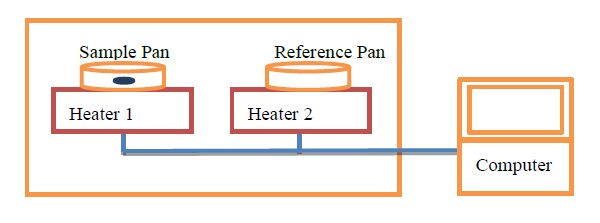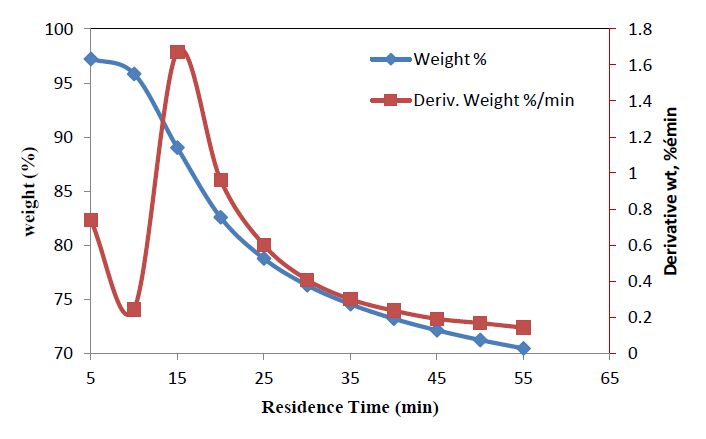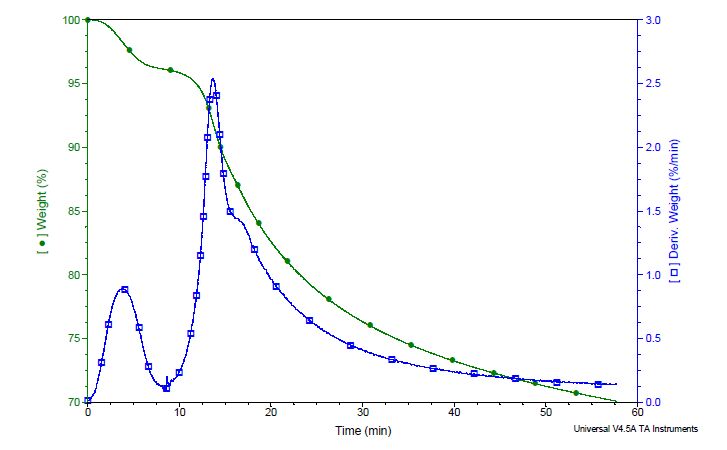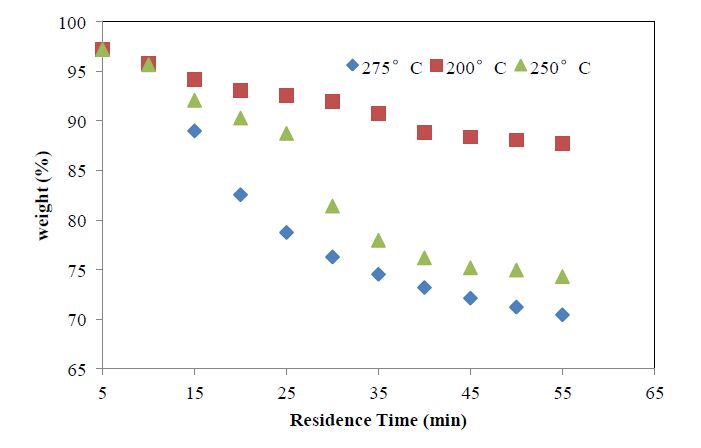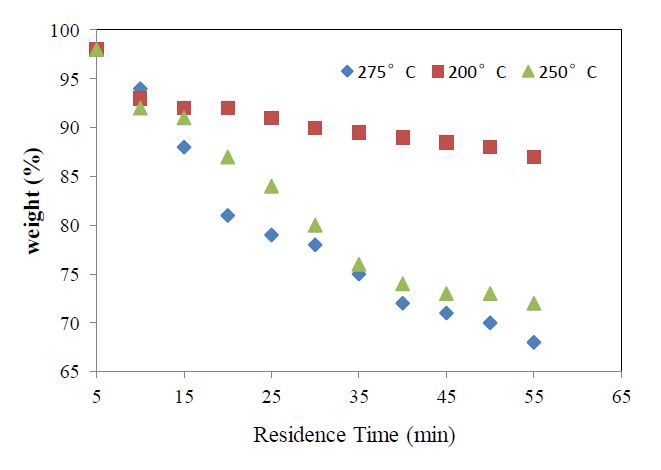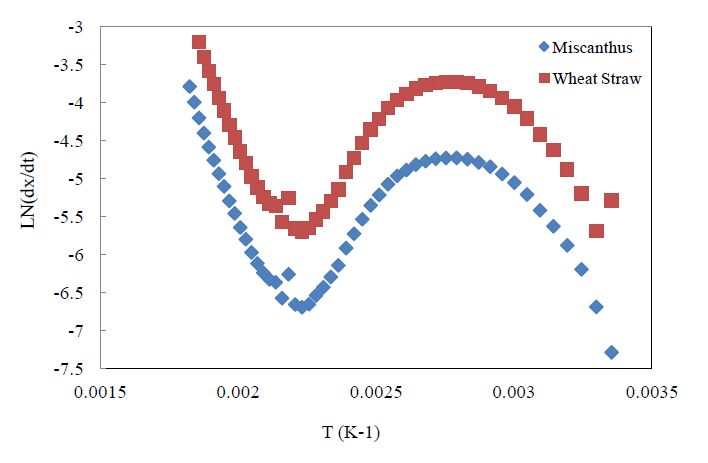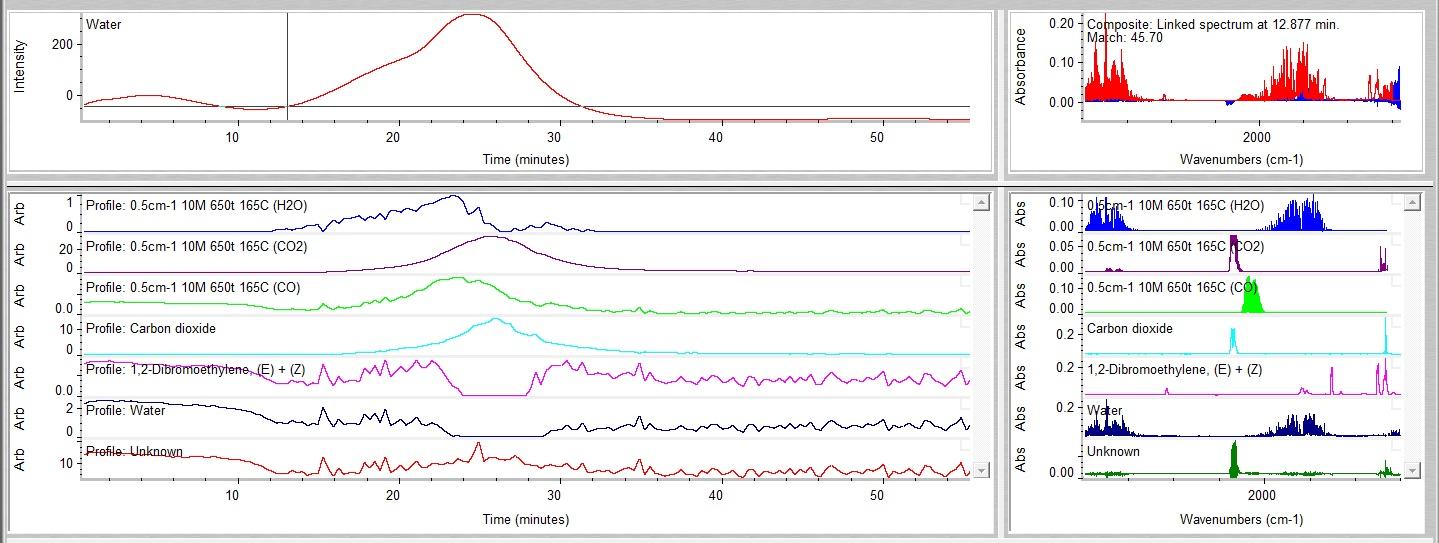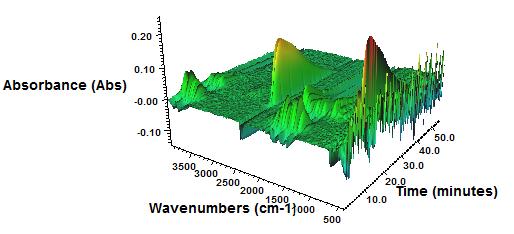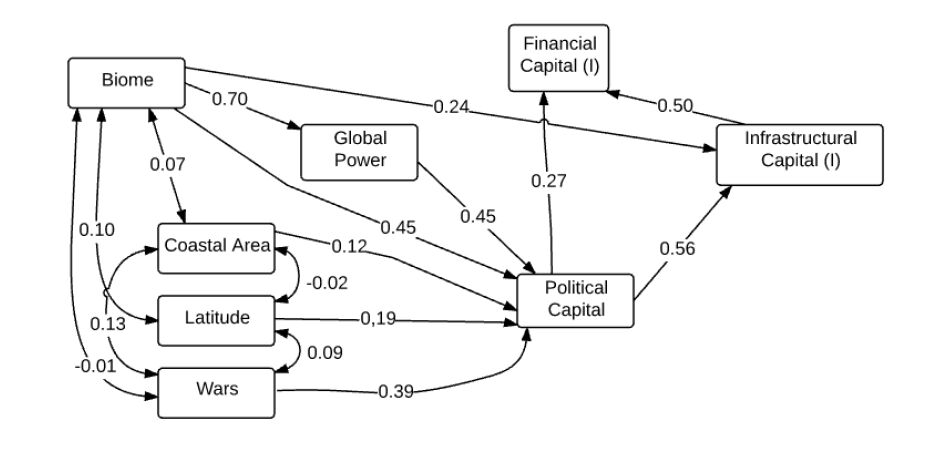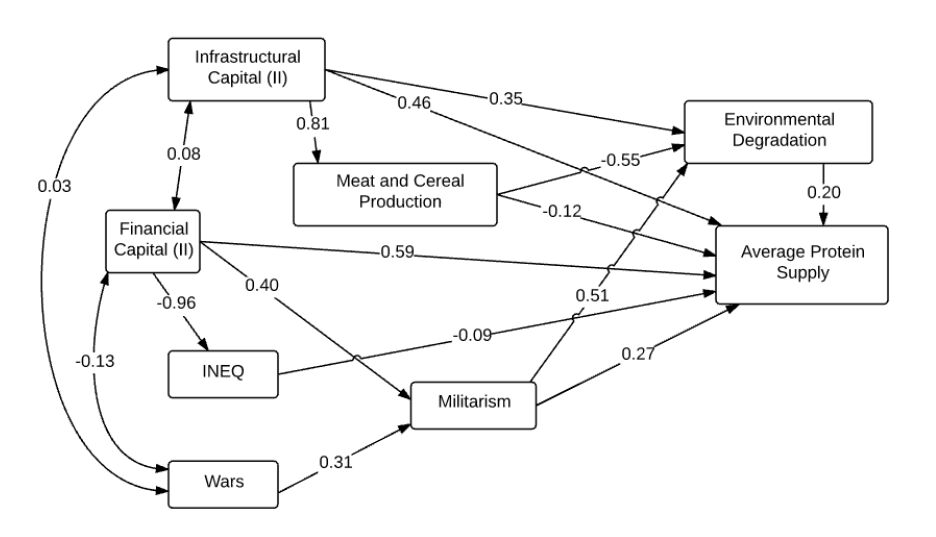1. Introduction
Canada, posses one of the largest forest and agricultural biomass resource with 998 million hectares of land, harvests about 143 million tons of carbon per year, which is equivalent to the carbon emissions from the use of fossil fuel locally to the atmosphere [1]. Canada, therefore, has an ample opportunity to become a biofuel production leader in North America. Use of biomass not only benefits the environment, energy security, waste management but also increases the new market, employment, economic opportunities for the local farmers. The technological development in the production of biofuel from biomass has progressed from first generation to the third generation. Adoption of direct feeding of biomass feedstock in a coal fired boiler to produce heat and electricity has a number of limitations such as high moisture contents, huge investment on the transportation, and storage problem due to biological degradation, poor grindability, low energy/bulk density, and lower heating value. To minimize these limitations, a pretreatment method by thermochemical conversion, called torrefaction is used. Torrefaction is a mild pyrolysis at temperature from 200 °C-300 °C with a minimum oxygen environment at a reasonable residence time and atmospheric pressure with heating rate less than 50 °C /min [2,3,4,5]. Main processes of torrefaction are drying, heating/mild pyrolysis and cooling processes. Lignocellulosic biomass consists of hemicellulose, lignin, and cellulose, out of which mostly devolatilisation and carbonization of hemicellulose takes place, whereas lignin and cellulose experiences very little impact [5,6]. After the torrefaction, the product yielded are reported to be of low in moisture contents, hydrophobic, non-biodegradable, higher heating value, higher energy density and improved grindability [7,8].
There are a number of works on torrefaction to investigate the characterizations, pelletization, grindability, gasification etc., which depends upon the torrefaction temperature, residence time, particle size, and biomass constituents [3,5,8,9]. For the establishment of the torrefaction facility at any area, local feedstocks need to be examined. Hence, this study explores the different properties of Miscanthus from energy crop family and wheat straw from an agricultural family from Ontario. There has been very limited existence of literature that made application of DSC-TGA-FTIR for the torrefaction of these types of biomass from Ontario. The mass loss kinetics, derivatives of weight loss, temperature lag, heat flow, heat/mass transfer limitations and the product gas compositions can be precisely monitored by a DSC-TGA-FTIR configured system than a laboratory scale torrefier. We have used both macro and micro TGA for this research.
2. Materials and Methods
2.1. Materials and Methods
Samples of energy crop-miscanthus and agricultural residue-wheat straw are collected from the farms in Ontario located near University of Guelph, Willington County. The collected samples were dried using thermo fisher muffle furnace, chopped and grounded in a Retsch PM 100 grinder and were sieved in a sieve AS 200 to prepare sample size of up to 500 microns.
2.1.1. Characterizations
Characterization: ASTM standards ASTM E871, ASTM E872, and ASTM D1102 are used for the identification of moisture contents, volatile matter, and ash contents respectively. The proximate analyses of torrefied biomass were done as per ASTM 1762-84 standard methods. For raw and torrefied biomass, the fixed carbon contents were determined by the difference with 100%, i.e. Carbon contents% = 100 − (ash + VM + MC). The carbon, hydrogen, nitrogen, sulfur contents were determined by using Organic Elemental Analyzer/CHNS-O Analyzer make—Thermo Scientific, model Flash 2000. The oxygen contents were calculated from the difference from total and verified using the same analyzer. The heating values were determined using IKA C-200 bomb calorimeter. Fiber analysis were performed according to the method explained by Sule (2012) [2,18].
2.1.2. Macro-TGA
A novel macro-TGA reactor (Figure 1), similar to Quartz Wool matrix (QWM) reactor [7], was designed, developed and fabricated in the machine lab at University of Guelph for the purpose of continuous torrefaction to produce a torrefied product. The stainless steel reactor was heated by four electric heaters of 1.25 KW capacities in close contact with the reactor wall and separately controlled by two PID controllers. The inner diameter of the reactor is 75 mm and height is 600 mm. A gas analyzer (Testo-350) was used to know the gas composition. Experiments were conducted for different samples (10-20 mm size) at various temperatures of 200 °C, 250 °C, 275 °C and 300 °C for a residence time of 40 minutes. The residence time measured from the point at which desired torrefaction temperature was reached. This reactor allows to observe simulation of any gas-solid relative velocity; to monitor gas compositions and gas temperature in a reactor while a precision electronic balance continuously measures the mass change (weight) of a reaction. Such reactor could thus accurately simulate the conditions that would expect in a real fixed, moving or entrained flow reactor. Before starting an experiment, the reactor was heated until an equilibrium temperature or steady state was attained. A stream of inter gas (N2) of flow rate of 1-16 liters per minutes was flushed through a flow meter (FMA 5400/5500, Mass Flow Controller, Omega, USA) to maintain an inert environment inside the reactor. Temperatures are measured at two different locations, one from an upper mid portion of the reactor and another from a lower mid portion of the reactor by two separate thermocouples through the temperature controller (CNi16D, Temperature and Process Controller, Omega, USA). Then the sample of biomass of known mass and moisture content was placed into the reactor. The residence time was recorded from that instant. During torrefaction, temperatures of the gas passing through the biomass are continuously recorded. The electronic balance (Model: MS204S, Mettler Toledo, Switzerland) continuously measures the mass of the biomass. The gas composition is determined by collecting gas in a gas-bag, then the quantity of gas is determined with the help of the gas chromatographic analyzer (GC).
Percentage of Mass Yield (MY), Percentage of Energy Yield (EY) and Energy Density Radio (EDR) are determined by using the following formula:
|
@{\text{MY}} = \frac{{{{\text{M}}_{{\text{tb}}}}}}{{{{\text{M}}_{{\text{rb}}}}}}@
|
(1) |
|
@{\text{EY}} = \frac{{{{\text{M}}_{{\text{tb}}}}{\text{*HH}}{{\text{V}}_{{\text{tb}}}}}}{{{{\text{M}}_{{\text{rb}}}}{\text{*HH}}{{\text{V}}_{{\text{rb}}}}}}@
|
(2) |
|
@{\text{EDR}} = \frac{{{\text{HH}}{{\text{V}}_{{\text{tb}}}}}}{{{\text{HH}}{{\text{V}}_{{\text{rb}}}}}}@
|
(3) |
where, @{{\text{M}}_{{\text{tb}}}}@ = Mass (daf) of torrefied biomass; @{{\text{M}}_{{\text{rb}}}}@ = Mass (daf) of raw biomass; @{\text{HH}}{{\text{V}}_{{\text{tb}}}}@ = Higher Heating Value of torrefied biomass; @{\text{HH}}{{\text{V}}_{{\text{tb}}}}@ = Higher Heating Value of raw biomass.
2.1.3. Micro-TGA
Torrefaction was carried out in a micro-TGA SDT Q 600 TA Instruments in order to compare the differences between the macro-TGA and micro-TGA. A sample of up to 500 microns in a powder form of raw lignocellulosic biomass were dried and kept in desiccators, then used for thermal treatment in micro-TGA. Micro-TGA was heated up at the rate of 5 °C/min to the desired torrefaction temperature (200 °C, 250 °C, 275 °C and 300°C). The sample weight of about 10-12mg was placed in a crucible heated for duration of 40 minutes. Nitrogen was supplied inside the reactor at the rate of 30 mL/minutes to create a minimum oxygen environment. The weight loss and heat flow characteristics were monitored and analyzed by using DSC-TGA plots and the gas compositions are identified by FTIR as per the layout shown in Figure 2.
2.2. Torrefaction weight loss kinetics
The degradation of lignocellulosic biomass and cellulose above 300 °C was generally expressed by the Broido-Shafizadeh model [11] based on which Di-Blasi and Lanzetta (1997) [12] developed a kinetic model expressed in two kinetic reactions for the isothermal degradation of xylan in torrefaction. A similar model was used for torrefaction weight loss kinetics for willow, and wheat straw, studied by Prins, et al. (2006) [13], Nocquet, et al. (2011) [14] and Shang, et al. (2013) [15] respectively. In their research, lignocellulosic biomass is torrefied, where A is broken down in V1 volatiles with reaction rate of kv1 with the solid yield of B with reaction rate of k1. In process of thermal treatment, the intermediate solid product breakdown into volatile V2 with reaction rate of kv2 and a solid product C with reaction rate of k2 as shown in the process diagram Figure 3.
Two step torrefaction kinetic parameters are expressed in the differential equations 4-9 [12].
|
@\frac{{{\text{dA}}}}{{\partial {\text{t}}}} = - \left( {{{\text{k}}_1} + {{\text{k}}_{{\text{v}}1}}} \right){\text{A}}@
|
(4) |
|
@\frac{{{\text{dB}}}}{{\partial {\text{t}}}} = {{\text{k}}_1}{\text{A}} - \left( {{{\text{k}}_2} + {{\text{k}}_{{\text{v}}2}}} \right){\text{B}}@
|
(5) |
|
@\frac{{{\text{dC}}}}{{\partial {\text{t}}}} = {{\text{k}}_2}{\text{B}}@
|
(6) |
|
@\frac{{{\text{d}}{{\text{V}}_1}}}{{\partial {\text{t}}}} = {{\text{k}}_{{\text{v}}1}}{\text{A}}@
|
(7) |
|
@\frac{{{\text{d}}{{\text{V}}_2}}}{{\partial {\text{t}}}} = {{\text{k}}_{{\text{v}}2}}{\text{B}}@
|
(8) |
|
@{{\text{k}}_{\text{i}}} = {{\text{k}}_{0{\text{i}}}}{{\text{e}}^{\frac{{{{\text{E}}_{{\text{Ai}}}}}}{{{\text{RT}}}}}}@
|
(9) |
Where, k
i is the reaction rate in the form of Arrhenious equations.
Hence, the torrefied net solid yield will be the addition of A, B and C as expressed by Prins, et al. (2006) [13] in equations 10 and 11.
|
@{\text{M}}\left( {\text{t}} \right) = {\text{A}} + {\text{B}} + {\text{C}}@
|
(10) |
|
@\frac{{{\text{M}}\left( {\text{t}} \right)}}{{{{\text{M}}_{\text{o}}}}} = (1 + \left[{\frac{{{{\text{k}}_1}{{\text{K}}_1} - {{\text{k}}_1}{{\text{K}}_2}}}{{{{\text{K}}_1}\left( {{{\text{K}}_2} - {{\text{K}}_1}} \right)}}{{\text{e}}^{ - {{\text{K}}_1}{\text{t}}}} + } \right[\frac{{ - {{\text{k}}_1}{{\text{K}}_1} + {{\text{k}}_1}{{\text{K}}_2}}}{{{{\text{K}}_2}\left( {{{\text{K}}_2} - {{\text{K}}_1}} \right)}}{{\text{e}}^{ - {{\text{K}}_2}{\text{t}}}} + \frac{{{{\text{k}}_1}{{\text{K}}_2}}}{{{{\text{K}}_1}{{\text{K}}_2}}}@
|
(11) |
3. Results and Discussions
3.1. Characteristics
The result on mass yield, energy yield and resultant energy density for torrefaction at different temperature are presented in the Table 1. While percentage of mass and energy yield decreases with the treatment temperatures, energy density increases.
Table 1. Mass yield during torrefaction at different temperature & 45 minutes residence time.
| Temperature (°C) for 45 minutes | Biomass | Heating Rate °C /min | Environment | Mass Yield (%) | Energy Yield (%) | Energy Density (ratio) |
| Miscanthus | Raw | 10 | Nitrogen | | | |
| 200 | Torrefied | 10 | Nitrogen | 84.13 ± 2.0 | 93.12 ± 1.8 | 1.13 |
| 250 | Torrefied | 10 | Nitrogen | 73.35 ± 0.8 | 88.45 ± 1.4 | 1.24 |
| 275 | Torrefied | 10 | Nitrogen | 67.92 ± 1.3 | 74.36 ± 1.5 | 1.31 |
| 300 | Torrefied | 10 | Nitrogen | 58.44 ± 0.7 | 68.93 ± 1.3 | 1.55 |
| Wheat Straw | Raw | 10 | Nitrogen | | | |
| 200 | Torrefied | 10 | Nitrogen | 82.56 ± 1.8 | 98.56 ± 1.6 | 1.11 |
| 250 | Torrefied | 10 | Nitrogen | 70.25 ± 1.2 | 87.48 ± 1.5 | 1.20 |
| 275 | Torrefied | 10 | Nitrogen | 64.56 ± 1.0 | 72.25 ± 1.4 | 1.33 |
| 300 | Torrefied | 10 | Nitrogen | 54.83 ± 0.9 | 67.59 ± 1.7 | 1.39 |
For proximity analysis the volatile matter (VM), mass contents (MC), ash contents, and higher heating value (HHV) in triplicate test run within the range of ±2%, ±1%, and ±0.8% respectively were only accepted and recorded. Averages of these values are presented in the Table 2 along with their ultimate analysis values. The heating value of the energy crop (miscanthus) is higher than the heating value of agricultural residue (wheat straw). In both biomass samples, heating value increases with increase in the torrefaction treatment temperatures. Similarly, ash contents of both samples also increase with the temperatures. Carbon contents increases with the increase in the torrefaction temperature, whereas the oxygen concentration decreases with the increase in the treatment temperatures. This shows, the torrefaction improves the fuel quality of biomass by improving C/O ratio.
Table 2. Proximate and ultimate analysis of biomass.
| Treatment Temperature (°C) 45 min | Biomass Type | Proximate Analysis (%) | Ultimate analyzer (%) | HHV MJ/kg |
| VM | MC | Ash | FC | C | H | N | S | O |
| Miscanthus | Raw | 83.96 | 5.47 | 1.79 | 7.56 | 46.66 | 6.00 | 0.21 | 0.00 | 45.34 | 18.47 |
| 200 °C | Torrefied | 82.21 | 2.01 | 2.01 | 11.64 | 48.16 | 5.81 | 0.15 | 0.00 | 43.87 | 19.82 |
| 250 °C | Torrefied | 80.84 | 1.20 | 3.24 | 12.72 | 49.31 | 5.50 | 0.12 | 0.00 | 41.83 | 20.66 |
| 275 °C | Torrefied | 78.82 | 0.95 | 3.99 | 14.24 | 52.12 | 5.35 | 0.10 | 0.00 | 38.44 | 22.67 |
| 300 °C | Torrefied | 74.17 | 0.73 | 4.58 | 18.52 | 55.33 | 5.22 | 0.10 | 0.00 | 34.77 | 24.86 |
| Wheat Straw | Raw | 77.55 | 5.83 | 5.16 | 11.46 | 45.54 | 5.59 | 0.00 | 0.00 | 43.71 | 17.87 |
| 200 °C | Torrefied | 77.25 | 1.03 | 6.68 | 15.04 | 46.56 | 5.36 | 0.00 | 0.00 | 41.40 | 18.54 |
| 250 °C | Torrefied | 75.29 | 0.82 | 7.84 | 16.05 | 48.72 | 5.22 | 0.00 | 0.00 | 38.22 | 19.81 |
| 275 °C | Torrefied | 64.88 | 0.65 | 8.71 | 25.76 | 50.99 | 5.01 | 0.00 | 0.00 | 35.29 | 21.78 |
| 300 °C | Torrefied | 52.54 | 0.33 | 9.77 | 37.36 | 55.86 | 4.88 | 0.00 | 0.00 | 29.49 | 22.22 |
3.1.1. Fiber analysis
The results of fiber analysis of the raw and torrefied biomass are presented in the Table 3. The hot water extractive in the raw miscanthus is higher than the wheat straw. The major extractives of such herbaceous biomass are known to be monomeric sugars like fructose and glucose, oligomeric sugars, phenolic glycosides, alditols and aliphatic acids [10]. The miscanthus contains 36.3% hemicellulose, 11.5% lignin, and 49.1% cellulose, whereas wheat straw has 26.8% hemicellulose, 10.7% lignin, and 38.8% cellulose, indicating miscanthus have higher contents of each components than wheat straw. This could be due to the presence of higher amount of a polysaccharide of glucose with b-(1-4) glucosidic bonds (Funke and Ziegler, 2010) [16]. The thermal treatment decreases more hemicellulose in the biomass than the cellulose and lignin, which is due to devolatilisation of hemicellulose at lower temperature.
Table 3. Fiber Analysis and Surface Area of Lignocellulosic Biomass.
| Feedstock | Lignocellulosic Biomass Composition (%) | Hot Water Extraction | Surface Area (g/m2) |
| Hemicellulose | Cellulose | Lignin | | |
| Miscanthus | | | | | |
| Raw | 36.3 | 38.8 | 11.5 | 12.6 | 11.4 |
| Torrefied at 275 °C 45 min | 14.2 | 35.5 | 41.7 | 6.8 | 14.2 |
| Wheat Straw | | | | | |
| Raw | 26.8 | 49.1 | 10.7 | 8.8 | 0.3 |
| Torrefied at 275 °C 45 min | 17.7 | 36.6 | 38.2 | 5.1 | 3.2 |
3.2. DSC-TGA and kinetics
Differential scanning calorimetry is a method to study thermal transitions of a biomass/polymer, when they are under thermal treatment. The heat absorbed by the biomass or difference in heat output of two heaters against temperature is plotted in DSC. Once the glass transition temperature reached, the biomass needs more heat because the heat capacity of the biomass is increased. This helps to identify the glass transition temperature by DSC. After the glass transition temperature, biomass polymers are free to move and finally attained a systematic arrangement which is called as crystallization temperature. At this temperature, biomass give off heat due to exothermic transition, i.e. heater 1 needs less heat to catch up the reference heater 2 heating rate, which consequently gives bid dip in the plot of heat flow and temperature. The temperature at the lowest dip is the crystallization temperature and the area under dip gives the latent energy of crystallization for the biomass. Once more heat is added above the crystallization temperature, biomass reaches towards melting temperature at which biomass absorbs more heat from heater 1 due to an endothermic transition on melting to keep the same rate as reference pan heating. This gives large peak on the DSC plot.
The percentage weight loss increases with an increase in the treatment residence time as shown in Figure 4a-d. The first loss is due to the loss in the moisture contents of biomass below 150 °C and 15minutes of residence time. Another sharp weight loss of biomass starts after 150 °C and above 15minutes of residence time. This may be due to the rapid devolatilisation of hemicellulose of biomass. Derivative of weight loss shows the rate of change of weight loss is much faster during devolatilisation of biomass. Micro-TGA shows more precise weight loss (%) and derivative weight (%/min) than the macro-TGA. However, the sampling handling capacity of the micro-TGA (5-10 mg) is too small in comparison to the Macro-TGA (1-5 g). Macro-TGA shows a closer pattern with the practical boiler.
The weight percentage verses residence time of torrefaction process at three various temperatures (200 °C, 250 °C, and 275 °C) captured from the TGA data for miscanthus and wheat straw are presented in Figure 4c-d. Trends of both plots show that weight % increases with the increase either in temperature or residence time. The slope of TGA curves increases with the increase in temperature from 200 °C to 250/275 °C. This slope signifies the effect of residence time on weight percentage change. Overall, the effect of temperature and residence time on the thermal degradation of wheat straw is higher than on the miscanthus in a similar thermal treatment environment. This may be due to higher contents of volatile matters and hemicellulose in miscanthus than in the wheat straw as shown in Table 2 and 3. This shows wheat straw is more reactive than the miscanthus as a solid fuel.
Table 4 shows the kinetic parameter of miscanthus during torrefaction. The kinetic energy for the miscanthus is higher than the wheat straw, which implies that the miscanthus torrefaction process needs more energy than the torrefaction process for wheat straw. Similarly, higher activation energy (E) implies the smooth reaction, whereas lower activation energy implies the quick reaction. Raw biomass is more reactive than the torrefied biomass [15].
Table 4. Torrefaction kinetic characteristics.
| a) Descriptive statistics for variables |
| Variable | Minimum value | Maximum value | Mean value | Standard dev. |
| T (K) | 448.15 | 548.15 | 498.15 | 31.02 |
| Y = Ln (derivative wt%/min/ 100) | -6.69 | -3.79 | -5.48 | 0.93 |
| X = Weight% /100 | 0.93 | 0.96 | 0.95 | 0.01 |
| b) Calculated Parameter values |
| Parameter | Miscanthus | Wheat Straw |
| A (min-1) | 8.8 × 103 | 1.2 × 104 |
| N | 0.88 | 0.91 |
| E (kJ/mol) | 59.95 | 51.72 |
| c) Analysis of variance |
| Source | DF | Sum of squares | Mean square | F-vlue | Prob (F) |
| Regression | 2 | 16.25750 | 8.12875 | 161.51 | 0.00001 |
| Error | 18 | 0.90594 | 0.05033 | | |
| Total | 20 | 17.16344 | | | |
Arrhenius plots for the study of the kinetics of the torrefied miscanthus and wheat straw are presented in Figure 5. It seems that the kinetic rate of thermochemical reaction for torrefied miscanthus is lower than that of torrefied wheat straw. Torrefaction kinetics take two steps: drying of biomass and devolatilisation of hemicellulose.
3.3. FTIR
TGA is one of a very reliable method for studying the thermo-chemical analysis of wide varieties of biomass samples. When FTIR is cascaded as a complementary method with TGA, it can give valuable information on the constituents of gaseous products as they are released by the thermal treatment of biomass samples. Hence, in this study, TGA is cascaded with FTIR to identify the torrefaction behavior of different biomass samples and measure the main gaseous constituents of the products released during the thermal treatment. The exhaust gas composition during the torrefaction process is monitored by FTIR by directly coupling with TGA. The majority of the exhaust gas contains carbon dioxide, carbon monoxide and water vapor. Traces of methane are also observed from the FTIR. The maximum exhaust released can be observed during the maximum weight loss period, which was also observed by Eseltine, et al. (2013) [17]. The output of the torrefaction process captured by the FTIR has been presented in the Figure 6a. The major gaseous components observed during torrefaction were water, carbon dioxide, carbon monoxide, 1, 2-Dibromethylene, and many other components. Figure 6b shows the gaseous components identified by TGA-FTIR analysis are CO at 2100 cm−1, CO2 at 2350 & 700 cm−1, and H2O at 3500-3700 and 750-1000 cm−1. TGA-FTIR study shows that the emission of gaseous products increases with the increase in the treatment temperature.
4. Conclusions and recommendations
Thermochemical pre-treatment of miscanthus and wheat straw were carried out for assessing their fuel quality in a macro-TGA and a configured DSC-TGA-FTIR system. Both torrefied samples show better solid fuel performance than the raw biomass in terms of moisture contents, energy contents, density, hydrophobicity and ignitibility etc. The torrefied biomass performs similar to coal. However, biomass has many limitations. The torrefaction temperature has more impact on the torrefaction process than the residence time. The higher torrefaction temperature results in the higher hydrophobicity. The gaseous product yields are mainly carbon dioxide and water. The drying process starts at a lower temperature at around 100 °C, whereas the devolatilisation of hemicellulose takes place from 200 °C. From the study on the characterization of torrefied lignocellulosic biomass, it can be concluded that torrefied energy crops and agricultural residues are a good candidate to be used in thermal power plants. The longer durability of the torrefied material also increases the probability for pelletization and exporting local and global markets. The raw biomass shows more reactive property than the torrefied one during the kinetic study, which shows torrefied biomass are more stable in a boiler. The kinetic rate of the thermochemical reaction for torrefied miscanthus is lower than that of torrefied wheat straw. Heating value is increased by 25% after torrefaction.
Acknowledgments
The authors would like to acknowledge the research grant from Natural Sciences and Engineering Research Council of Canada (NSERC, Grant no. 400495) for this study.
Conflict of interest
All authors declare no conflicts of interest in this paper.









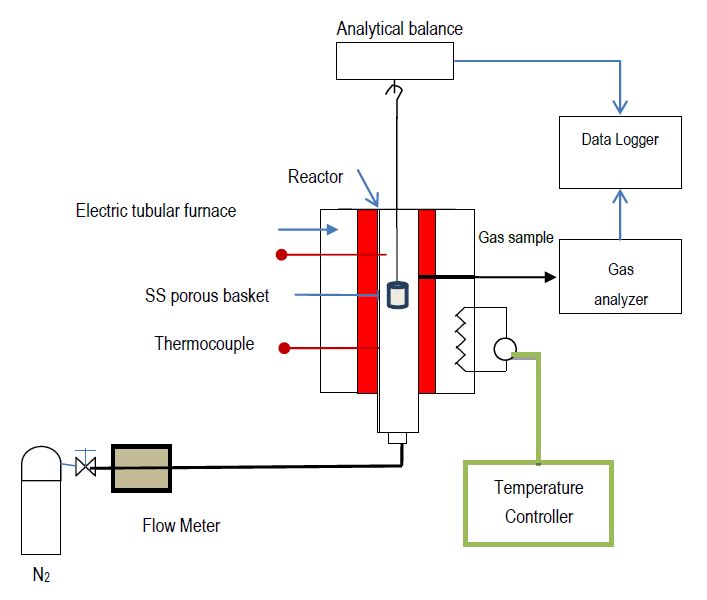
 DownLoad:
DownLoad: 